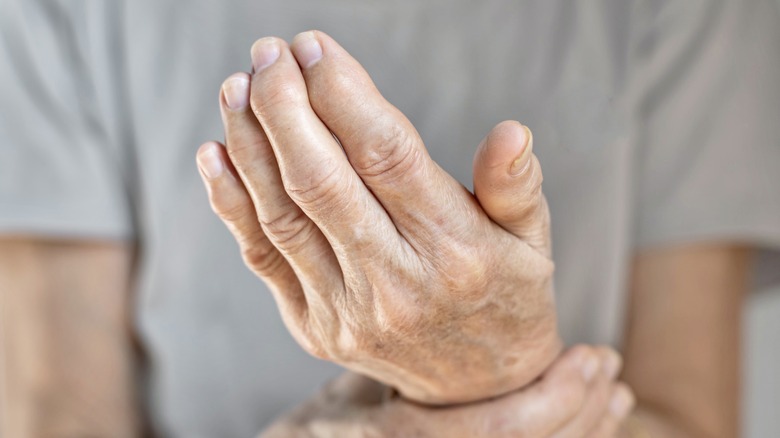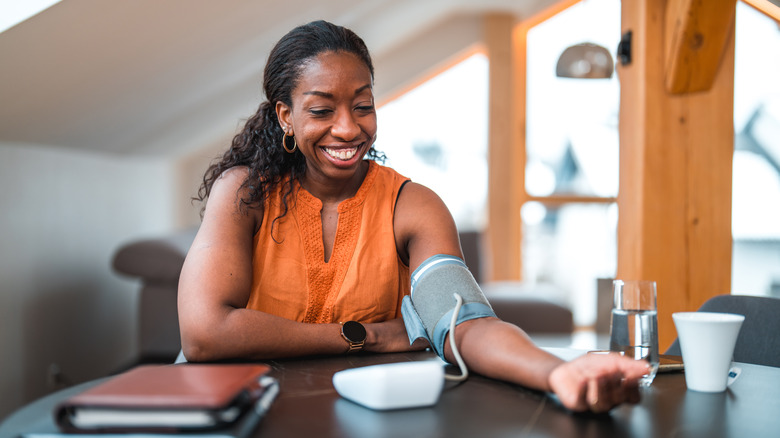If Your Fingers Look Like This, You Might Have High Blood Pressure
Between 60 and 80 times a minute, your heart pumps blood through your arteries to reach all parts of your body. The pressure placed on the walls of your arteries is your blood pressure. A normal blood pressure is less than 120 systolic and 80 diastolic, or 120/80 mmHg. Any reading higher than that means more stress on your arteries which makes them less elastic over time. That can lead to less blood circulating through your body, causing a heart attack, stroke, or kidney disease.
The American Heart Association says that high blood pressure occurs in almost half of the U.S. population, and many of those people aren't aware of their condition because it often doesn't have symptoms. Yet those with a blood pressure of 180/120 mmHg could have severe headaches, difficulty breathing, blurred vision, confusion, or buzzing in the ears (per World Health Organization). Another sign of high blood pressure might be swollen fingers and feet.
Your fingers might swell if you have high blood pressure
Your heart needs to work harder to pump blood through your body, and sometimes blood has a hard time returning from the extremities back to the heart. That could result in your fingers feeling swollen. High blood pressure is often caused by high amounts of sodium in the diet, causing you to retain more water. This excess fluid can make your rings feel tight. If this occurs often, you might want to get your blood pressure checked.
Uncontrolled high blood pressure could lead to kidney disease. Your kidneys have the job of removing waste from your blood and keeping your fluids in balance. If your kidneys don't have sufficient blood supply, they can't do their job. This can lead to edema, or a buildup of fluid in your tissues. Swelling from edema is usually in the legs and feet, but you might also feel it in your arms. Even medications for high blood pressure could cause your fingers and hands to be swollen.
Steps you can take to control your high blood pressure
Diets high in sodium and saturated fat while low in fruits and vegetables can put you at risk for high blood pressure. Alcohol and tobacco use, obesity, aging, family history, and lack of exercise also can factor into your risk for high blood pressure.
A medical professional will often check your blood pressure whenever you visit a doctor, but the Office of Disease Prevention and Health Promotion suggests getting your blood pressure checked every three to five years if you're under 40 years old and aren't at high risk for high blood pressure. People 40 and over should have their blood pressure checked once a year.
If your blood pressure is elevated or high, your medical team might suggest lifestyle changes to lower your blood pressure without medication. This includes cutting back on sodium in your diet or adopting the DASH eating plan. You'll also want to include at least 150 minutes of exercise each week to bring down your blood pressure. Even if you need to take blood pressure medication, these lifestyle changes can make the medication more effective.



